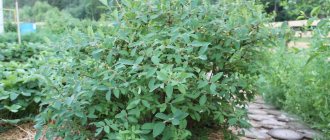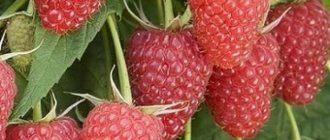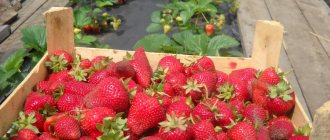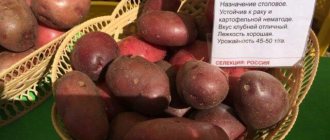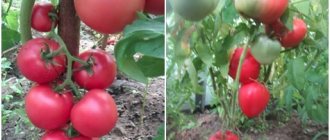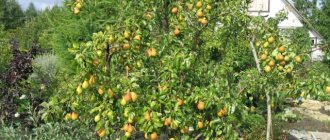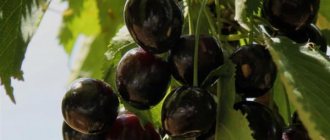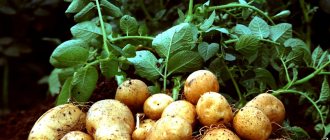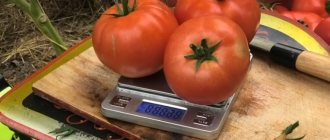Frost-resistant and unpretentious varieties of cherries are popular and take root well in all regions of our country. At the same time, the tree does not require constant attention from the gardener and is able to develop properly and bear fruit abundantly with minimal care.
Mayak is also an unpretentious and hardy variety. A relatively young and not yet widespread variety, it is distinguished by high-quality, tasty, large fruits and resistance to negative environmental factors.
The article will tell you about the characteristics of the bush cherry variety Mayak and the rules for growing it.
Description of the Mayak cherry variety
Mayak is a cherry bred by domestic breeders from Yekaterinburg. The variety was obtained by cross-pollination of annual Michurin cherry seedlings. The originators are S. V. Zhukov and N. I. Gvozduyukova.
It was entered into the state register in 1974. Recommended for cultivation in central Russia, but suitable for cultivation in regions with more severe climates. It is actively grown in Siberia, Belarus, Ukraine and the Baltic states.
Note! Despite the fact that the variety is recommended for cultivation in central Russia, higher yields are recorded in cities with a southern climate.
Main characteristics
The description of the Mayak cherry variety impresses experienced and novice gardeners. This is a hardy plant with high yields and excellent fruit taste.
Characteristics of the Mayak cherry variety:
- Tree. Low, bushy. The height varies between 1.7-2 m. The crown is spreading and of a fairly rare - horizontally elongated - shape. The branches are quite thin, flexible, but at the same time strong. The bark is gray.
- Leaves. The leaf blade is elongated ovoid, the base is wedge-shaped, and the tip is pointed. The edges are covered with jagged edges. The texture of the sheet is quite dense, elastic, glossy. The leaf plate is bent with two sides like a boat. The leaf color is dark green, without a purple tint. The petioles are green with a purple tint, the length reaches 0.7 mm, and the thickness is 0.1 cm. The buds are cone-shaped, reaching a length of 0.4-0.5 cm.
- Bloom. The open flowers are flat, reaching a diameter of 4.2 cm, the petals are arranged freely. The calyxes are goblet-shaped, the sepals have pronounced serrations. The stigma is located at the level or slightly above the anthers. The length of the pistil reaches 1.1 cm, and the length of the stamens is 0.7 cm. The flowers form inflorescences of 3 pieces. Ovaries are formed on annual shoots and bouquet branches. The plant is partially self-pollinating. Flowering lasts from late May to early June (on average a week).
- Fruiting. Lasts from July to September. The fruits are large. Each berry reaches a length of 1.8 cm, a width of 1.7 cm, the thickness of the pulp is 0.7 cm. The weight of each fruit varies between 5-6 g. The fruits are round, slightly compressed on both sides. The skin is dark red, thin, glossy. The pulp and juice are red. The taste is sweet, with a slight sourness. The stone is oval in shape, makes up 6.2% of the fruit's weight (approximately 1/4 g), is brown in color and is easily separated from the pulp. The petiole reaches a length of 4.7 cm and a thickness of 1.2 mm. It is so firmly attached to the berry that it comes off along with the pulp. Mayak cherry fruits contain 1.7% acids and 7.4% sugars. Per 100 g of product there are 2 mg of vitamin C and 101 mg of vitamin P. The berries are prone to cracking.
- Productivity. Tall trees harvest an average of 15 kg of fruit from an adult tree. In the southern regions, the yield increases to a maximum of 25 kg.
- Terms of ripening. Mid-season. Maturation is not friendly. Lasts from July to August.
- Immunity. Average. There is no resistance to fruit rot and coccomycosis. It is especially often affected by aphids and plum sawflies.
- Resistance to negative environmental factors . Frost resistance is high. The plant can tolerate cold temperatures down to -30…-35ºC. It is drought resistant.
- Transportability. Not tall. Cherries spoil quickly. Has a tendency to crack.
Shrub cherry Mayak begins to bear fruit already 3 years after planting. With proper care, it produces crops for more than 30 years.
Note! Although the Mayak cherry is considered partially self-pollinating, it produces high yields only if there are other varieties of this crop on the site. The following varieties of cherries are considered suitable pollinators: Nizhnekamskaya, Truzhenitsa Tatarii, Shakirovskaya.
Advantages and disadvantages
Cherry Mayak has a number of advantages. These include:
- high frost resistance;
- drought resistance;
- high productivity;
- large fruit;
- long fruiting;
- good fruit taste.
The variety also has disadvantages. They are presented in the list:
- susceptibility to certain diseases and pests;
- low transportability;
- spreading crown.
Advantages and disadvantages
Coccomycosis is the main enemy of cherries
The main advantage of the variety is high yield. From 1 bush you can collect up to 15 kg of berries, and in warm summers - up to 25 kg. Other advantages of the Mayak variety:
- fruits are not prone to shedding or cracking;
- winter hardiness with frost tolerance down to −35 degrees;
- stunted trees;
- drought resistance;
- good survival rate with any neighboring plants;
- easy separation of seeds from pulp, which is important for making cherry jam, jam, juice, jelly, compote.
Flaws:
- instability to the onslaught of strong winds and hurricanes;
- poor fruit ripening due to lack of heat and sun;
- rapid rotting of berries due to untimely harvesting;
- inability to grow in excessively moist soil, since the roots quickly begin to rot and the tree bark begins to crack;
- cracking of berries when kept under the scorching sun for a long time, lack of timely watering;
- instability to the onslaught of pests (aphids, slimy sawfly).
The main enemy of the Mayak cherry is coccomycosis, which quickly affects the fruits and foliage. That is why, at the first appearance of a fungus, it is important to immediately begin the fight, treating tree crowns with fungicides to avoid further spread of diseases.
As a preventive measure, trees can be sprayed with nitrogen products. The main thing is to prevent the appearance of spots on the berries - signs of the spread of fungal spores. For treatments, you can use copper sulfate (1%), Bordeaux mixture.
The lighthouse is a record holder for fruiting. Overall, a good variety with large and juicy berries. If you learn to grow it correctly, observing agrotechnical standards, then you can get good harvests.
Planting seedlings
Cherries are planted in open ground in early spring or after leaf fall. It is recommended to buy seedlings in advance - in the fall - and store them outside under a cover of spruce branches. Such planting material turns out to be hardy and hardened.
Selection and preparation of seedlings
In order for the plant to quickly take root and take root well, it is important to choose high-quality planting material. Pay attention to the following parameters:
- Dimensions. The height of the seedling should vary between 60-100 cm. The trunk diameter should be at least 2.5 cm.
- Root system. It must be strong and have many branches. The roots should not be dry, it is important that they are moist when cut. The diameter of the entire root system should vary between 20-30 cm. Seedlings with a closed (in an earthen coma) and open root system are sold. The first option takes root better.
- Branches. The seedling must have several shoots. They should not be dry. To check this, scrape the bark from a small area. There should be green, damp tissue underneath.
Choose annual or biennial seedlings. It is believed that two-year-old cherries take root better.
Seedlings with a closed root system are planted without pre-treatment. The exposed root system is first immersed for 60 minutes in a light pink solution of potassium permanganate, and then for 12 hours in the root formation stimulator “Kornevine”.
Soil preparation and step-by-step planting instructions
In order for the Mayak cherry to bear fruit for a long time and abundantly, it is important to choose a suitable place for it. The tree is planted in a well-lit, not shaded area of the garden. Groundwater should not be located closer than 1.5 m to the surface. It is important that the tree is located on a hill and not in a low place.
Mayak grows best in loamy, sandy and sandy loam soils with neutral acidity. If the values are above 6 pH, add dry lime.
Preparing the soil for planting seedlings begins 3-4 weeks in advance. The soil is dug up to a depth of 0.5 m and cleared of weeds and plant debris. The soil is watered with a hot solution of copper sulfate.
Note! Cherries should not be planted in the place of the old orchard for 5 years after the orchard is uprooted.
The holes for planting steppe (bush) cherries are placed at a distance of 2-3 m from each other, they should have a depth of 60 cm and a diameter of 60-80 cm. The soil removed from the hole is mixed with 5 kg of humus. 1 kg of ash, 30 g of potassium nitrate and 40 g of superphosphate.
Planting technology:
- A 5 cm layer of drainage (shell stone, expanded clay, crushed stone) is poured into the bottom of the hole. A mound is formed from part of the nutrient soil mixture at the bottom of the hole. It should be in the center.
- The tree is placed on an earthen mound. Its roots are evenly distributed around the elevation.
- The hole is filled with the remaining fertile soil. This is done in layers, compacting each layer to expel the air lines.
- The tree is watered generously with 3 buckets of warm water. If the soil settles, add more soil.
- A hole with sides, 50-60 cm in diameter, is formed around the cherry. Mulch (hay, straw, bark, sawdust, peat, humus) is poured into the resulting circle.
Note! Cherries can be planted next to other fruit and berry trees. The exceptions are currants and gooseberries - these shrubs increase the risk of plant infection by infections and pests.
How and when to plant
Zhukovsky cherry, like this variety, prefers loamy or sandy loam soils with good aeration. In clay soils, the yield may be insufficient, so it is advisable to add coarse sand to the composition. Also, before planting, it is necessary to dig up the soil with a sufficient amount of humus, add superphosphates and organic matter. The planting site must be provided with maximum light so that the berries ripen evenly.
Landing algorithm:
- It is necessary to leave up to two meters of free space between plants.
- In the prepared hole (depth of the hole - up to 70 centimeters, diameter - up to half a meter), you need to add superphosphate and potassium . It is also not recommended to use nitrogen in combination; this can lead to maximum growth of the above-ground part to the detriment of the root part.
- A supporting peg is placed in the hole to form a stem. The seedling is placed at a small distance from it, so as to not move such a support as it grows. It is advisable to tie the trunk in several places with materials that do not injure the plant (garden twine, polystyrene tape, or even a piece of fabric are excellent).
- The root collar is not buried deep during planting; it must be turned in a southerly direction.
- The root shoots are well straightened, sprinkled with earth and compacted well.
But how and when to plant Kharitonovskaya cherries, and what reviews there are from gardeners about it, are outlined here.
The video shows how and when to plant a cherry seedling correctly:
After planting, it is necessary to water the plant well, leaving a depression around the roots to collect moisture. As a rule, one- and two-year-old sprouts that have undergone the necessary pre-planting preparation are suitable for planting. It is advisable to purchase seedlings with a buried root system (sold in disposable pots).
When purchasing, you need to pay attention to the condition of the branches and trunk, as well as inspect the root system. A stronger and more viable shoot has a better chance of successful acclimatization.
Subtleties of further care
Caring for Mayak cherries will not take much time. This unpretentious plant requires a minimum of gardener attention.
However, it is important to follow the basic rules of care:
- Watering. Young cherries are watered 3-4 times per season. If the winter was snowy, then this is not necessary to do at the beginning of spring. The soil is moistened in May, twice in the summer, on the driest days, and once in the fall if there is little precipitation. For irrigation, use warm, settled water. The procedure is carried out in the morning or evening, when the sun is not active. 2-3 buckets of water are poured under each tree.
- Loosening and weeding. The soil is loosened after each watering and heavy rainfall, as well as in preparation for wintering and after thawing of the soil. During the loosening process, weeds are removed - the main cause of infection of fruit and berry trees and shrubs.
- Mulch. Mulch reduces the frequency of loosening, slows down the growth of weeds, and protects roots from diseases, pests and cold weather. In addition, such a layer plays the role of additional fertilizer. Bark, hay, straw, humus or peat are used as mulch.
- Formation. Mayak cherry is prone to thickening and excessive growth of the bush, so sufficient attention will have to be paid to formative pruning. It is carried out in the spring, 3 weeks before the buds swell. When forming, leave from 7 to 12 skeletal branches located at least 15 cm apart from each other. All weak branches that grow inward and create thickening are removed. Annual shoots are not shortened. For ease of maintenance of the Lighthouse, the growth point is limited to 1.5-2 m.
- Sanitary pruning. It is recommended to do sanitary pruning in the fall after leaf fall. Remove diseased and dry branches.
- Feeding. The first fertilizing is applied 3 years after planting. Nitrogen fertilizers are used in early spring and July. After harvesting, potassium and phosphorus preparations are used. Organic matter is added every 3-4 years.
After pruning, treat the cut areas with garden varnish to avoid gum bleeding, which weakens the tree and causes it to become infected.
Disease and pest control
Mayak cherry is most susceptible to coccomycosis and root rot. Coccomycosis is expressed in the appearance of small red spots on the leaves and shoots, which soon spread to the fruits. The affected parts of the plant dry out and fall off. As a result, cherries simply do not survive the winter.
To get rid of the disease, cherries are treated with fungicides. For prevention, spring treatment is carried out with Bordeaux mixture.
Fruit rot only affects berries. Small brown spots appear on the fruits, which increase in size and lead to rotting of the entire pulp.
To cure the disease, pick off all affected berries. After this, treatment is carried out with copper sulfate.
Of the pests, the greatest danger to Mayak cherries is the plum sawfly and cherry aphids. Both pests feed on the sap of leaves and young shoots. To get rid of insects, the tree is treated with insecticides (Iskra) before or after flowering.
To prevent a tree from being infected by pests, all leaves and plant debris are removed from the area in the fall, weeds are removed throughout the year, and sanitary pruning is carried out in the fall. To prevent diseases, the tree is sprayed with copper sulfate every spring before flowering.
Fruit characteristics
“Mayak” is a clear champion among other cherry varieties in terms of the abundance of fruit. From one tree it is quite possible to get about 15 kg of berries per season, and in warm summers even 20-25 kg. They do not ripen at the same time, in the summer - from late July to August.
Important! In order to improve productivity, it is necessary to plant other suitable varieties next to “Mayak”: “Nizhnekamskaya”, “Truzhenitsa Tataria”, “Shakirovskaya”. Interestingly, the fruits do not fall off the bush at all, so they do not have to be lifted from the ground
At high temperatures, the berries crack, but there is nothing wrong with that. The main thing is to monitor the ripening of the crop and collect it on time so that it does not spoil and does not reach the birds. The self-fertility of the variety is partial.
The berries of this variety themselves are dense and large, each weighing about 5-6 grams. They are characterized by a glossy burgundy-colored skin. The pulp is red, fleshy, juicy and very sweet. The fruits are round, but slightly flattened at the seam side.
They are high in glucose and low in acidity, making the cherries more like sweet cherries. This gave the fruit the love of many people, especially children. They are good for consumption not only fresh, but also as jam, jam, juice, compote and even jelly.
The seed of the berries is brown-gray, small, and easily separated from the pulp.
Check out such varieties of cherries as “Vladimirskaya”, “Molodezhnaya”, “Shokoladnitsa”, “Izobilnaya”, “Turgenevka”, “Kharitonovskaya”, “Uralskaya Rubinovaya”, “Morozovka”, “Chernokorka”.
Reviews from gardeners
Most Mayak gardeners are happy with this cherry. This variety is practically devoid of serious drawbacks.
Irina, Zheleznogorsk: “We planted the Mayak cherry tree in the garden 6 years ago. The first harvest was collected already 3 years after planting. During formation, 10 skeletal branches were left. The harvest increases every year. The variety is drought-resistant, so I water it only if there is no rainfall in the summer. I feed it with ammonium nitrate in the spring, and zala solution in the fall. Once every three years I add a solution of manure. Overall, I’m happy with the variety.”
Victor, Belgorod: “I have Mayak cherries growing in my dacha. In the first year, the tree became ill with coccomycosis. I noticed it in time, so I managed to save him. I simply tore off all the affected leaves and treated them with Iskra. Since then, every spring the garden must be sprayed with copper sulfate. Since then, the cherry has not been sick. I harvest about 20 kg of harvest from 1 tree per season. The taste of the fruit is excellent, the berries are large and sweet. Good fresh, frozen and in pies.”
History of creation
According to legend, the birthplace of the Mayak cherry is the city of Kerasund (the coast of Asia), it was taken to Europe by the commander Lucullus as a banner of victory. In fact, Ivan Michurin was the first to decide to adapt the cherry variety to northern climatic conditions. First, a cherry-cherry hybrid called Beauty of the North was bred, then several more winter-hardy varieties with controversial taste and yield characteristics.
The creation of a more successful variety was a real event. In 1974, at the Sverdlovsk agrotechnical station, Mayak was created by breeders during cross-pollination with other Michurin seedlings and today it is recognized as one of the universal, frost-resistant, suitable for growing in central Russia.
